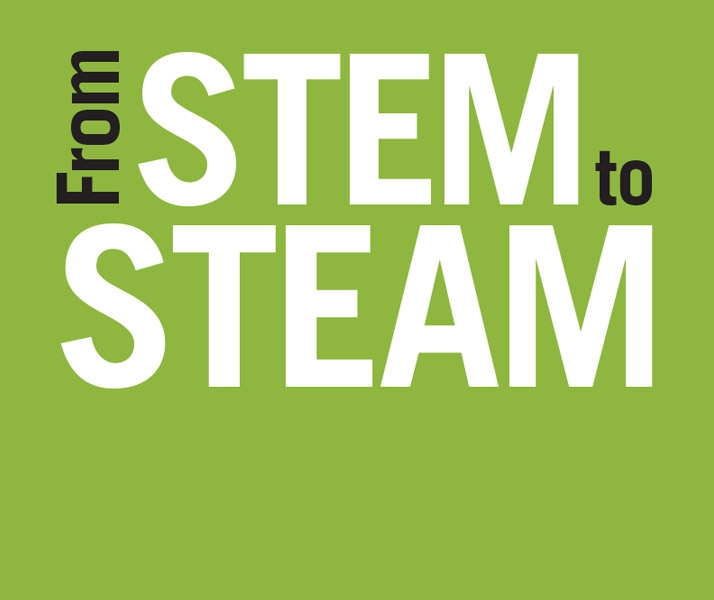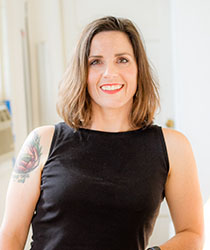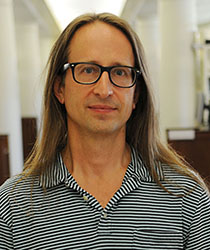
From Stem to Steam
Integrating science and the creative arts prepares students for a changing job market and global challenges.
By Jeff Hodges M.A.L.S. ’11
Three years ago, Associate Professor of Art Jennifer Printz and Visiting Assistant Professor of Physics Brian Gentry launched a January Short Term class whose philosophy, rooted in the Renaissance, is now regaining attention among 21st century teachers and learners.

Printz
Engaging Reality: Interpreting Matter, Energy, Space, and Time Through Science and Art immersed students in the concept of blending two disciplines that have been largely kept separate for hundreds of years. “We’re seeing that convergence as artists are wanting to play with scientists’ technology, or scientists [are] realizing there’s a crucial importance to the creative act,” Printz explains. “Learning how to see and learning how to be creative are paramount to making new discoveries or coming up with new ways of doing things.”
Printz and Gentry had such a positive experience with the class, especially after team teaching it again in 2018, that they wanted to share their energy and excitement with the campus community and the public at large. In March, they conceived and presented Transect/Intersect/Transform, a weeklong symposium featuring readings, discussions, performances, lectures, and exhibitions, all focusing on the connections between the sciences and the creative arts.
Gentry says the symposium was designed in part to complement Hollins’ growing focus on entrepreneurship. “Entrepreneurial activity is inherently creative, and we need to focus on that process in order to solve difficult problems. This has helped open doors to a renewed sense of overlap. We’re going from STEM, which is science, technology, engineering, and math, to STEAM—science, technology, engineering, arts, and math. Large problems such as climate change are going to require everything we’ve got, and that means we’ve got to approach it from all sides. These types of issues are bringing people together in that sense.”
“If we stay in silos,” Printz adds, “we’re limiting the way we have a discourse on what we can do. But when we start to integrate, it becomes much more powerful in how we can change what we’re doing in the classroom or out in the world at large. If an art student, for example, creates work that deals with the sciences, or history, or whatever, it becomes so much richer. They’re working from an informed place. I can always see the level of quality in their work go up once they’ve got that kind of hook into something else. I’ve certainly seen that in our team-teaching efforts. Students will come into the class and say, ‘I am an artist’ or ‘I am a scientist,’ and they begin making this amazing work and taking down those labels.”

Gentry
Transect/Intersect/Transform featured academics who are actively embracing both disciplines. These included Andrew Yang of the School of the Art Institute of Chicago, whose scholarly interests range across the visual arts, the sciences, and natural history, and David Trinkle, M.D., associate dean for community and culture at the Virginia Tech Carilion School of Medicine, where the training of new physicians reflects the needs of today’s workplace.
“Most medical schools are sending a lot of their first-year students to take art and art history courses because they want that well-rounded person who has sharp skills of observation, which is one of the greatest assets a physician can have,” says Gentry. “Medical schools don’t want cookie-cutter scientists anymore. It’s not enough to have strong MCAT scores and good grades in your biology and chemistry classes. They want students who are interesting, doing things outside of science, and know how to talk to other people.”
Gentry is encouraged to see this mindset gaining a foothold. “What parents, alumnae, and students are thinking about is the job market. People change jobs all the time and whether they graduate now or in five years, students have to be prepared to respond creatively and flexibly, because they may end up somewhere way, way different than the degree they earned.”
Jeff Hodges is director of public relations.
